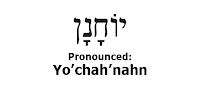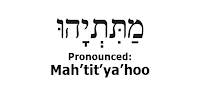The Ritual Hand Washing
The ritual washing for the Shabbat meal, which takes place immediately after Kiddush and before the blessing of the bread, is another form of sanctification.
A cup is filled with water which is poured twice over the right hand, then twice over the left hand. (Some have the custom of pouring 3 times over each hand.) The entire hand up to the wrist, with all jewelry removed, should be rinsed and a blessing recited as the hands are dried. There should be no talking between the washing of hands and eating the bread because one washes in order to eat bread, and there should be no interruption between these related actions.
Blessed are You, Lord our God, King of the universe, who has made us holy through His commandments, and has commanded us to wash our hands.

Ba’ruch Ah’tah Ah’doh’nai Eh’lo’hay’nu Melech ha’o’lam ah’sher kidishanu b’mitz’vo’tav v’tzee’vanu al n’tee’laht ya’da’yim.
Notice that the word used for washing in the blessing is n’tee’laht. Technically the Hebrew word “to wash” is lir’chotz (which in the grammar of the blessing would be r’chee’tzat). One should note that the unusual words used for “washing hands” are al n’tee’laht ya’da’yim, literally meaning “the lifting up of hands.” The washing of n’tee’laht ya’da’yim is all about holiness. When performing this ceremonial washing, one “lifts” one’s hands to a higher level and consecrates them for nobler deeds in fulfillment of G-d’s commandments. Indeed, this washing of the hands is performed in the same way that the priests of old washed their hands in the Holy Temple.
Twebrew School: Shabbat is brought to you on behalf of Shabbat Across America and Shabbat Across Canada, the only cross-continental celebration of Shabbat. The fourteenth annual SAA/C will take place on March 5, 2010. To learn more, click here.
Copyright © 2010 National Jewish Outreach Program. All rights reserved.
A cup is filled with water which is poured twice over the right hand, then twice over the left hand. (Some have the custom of pouring 3 times over each hand.) The entire hand up to the wrist, with all jewelry removed, should be rinsed and a blessing recited as the hands are dried. There should be no talking between the washing of hands and eating the bread because one washes in order to eat bread, and there should be no interruption between these related actions.
Blessed are You, Lord our God, King of the universe, who has made us holy through His commandments, and has commanded us to wash our hands.

Ba’ruch Ah’tah Ah’doh’nai Eh’lo’hay’nu Melech ha’o’lam ah’sher kidishanu b’mitz’vo’tav v’tzee’vanu al n’tee’laht ya’da’yim.
Notice that the word used for washing in the blessing is n’tee’laht. Technically the Hebrew word “to wash” is lir’chotz (which in the grammar of the blessing would be r’chee’tzat). One should note that the unusual words used for “washing hands” are al n’tee’laht ya’da’yim, literally meaning “the lifting up of hands.” The washing of n’tee’laht ya’da’yim is all about holiness. When performing this ceremonial washing, one “lifts” one’s hands to a higher level and consecrates them for nobler deeds in fulfillment of G-d’s commandments. Indeed, this washing of the hands is performed in the same way that the priests of old washed their hands in the Holy Temple.
Twebrew School: Shabbat is brought to you on behalf of Shabbat Across America and Shabbat Across Canada, the only cross-
Copyright © 2010 National Jewish Outreach Program. All rights reserved.


Comments
Post a Comment